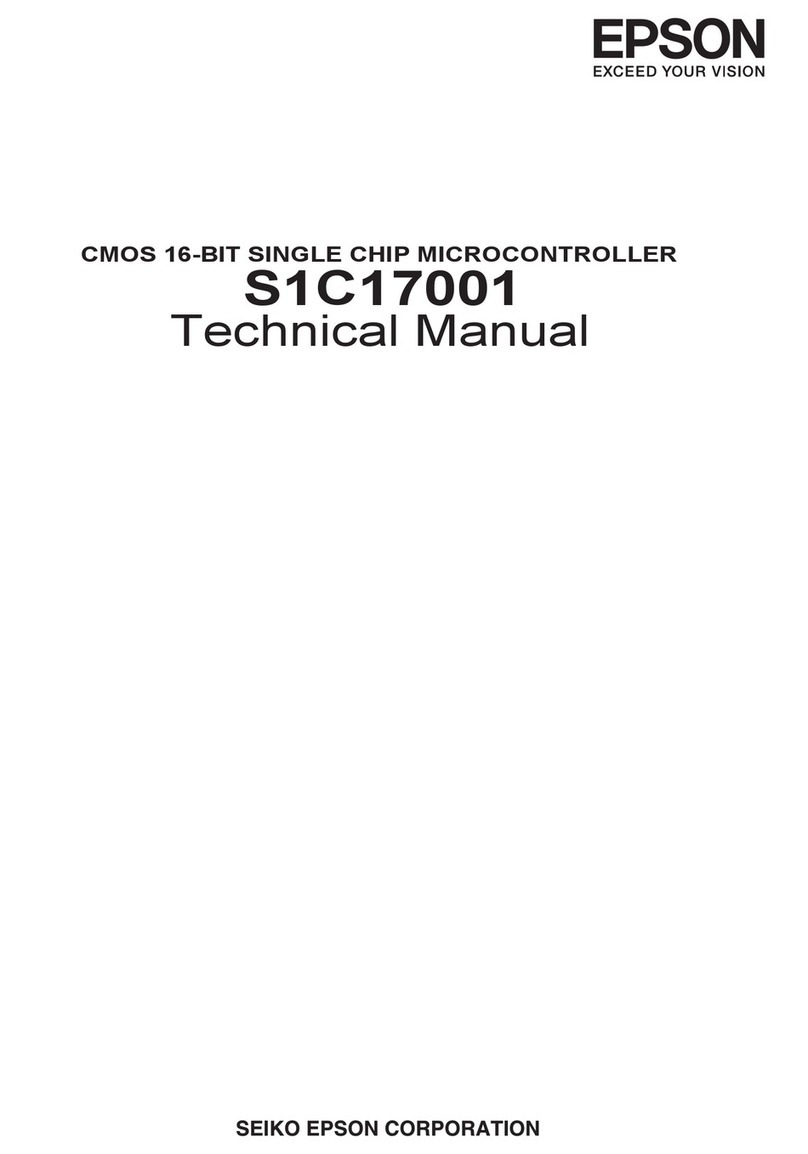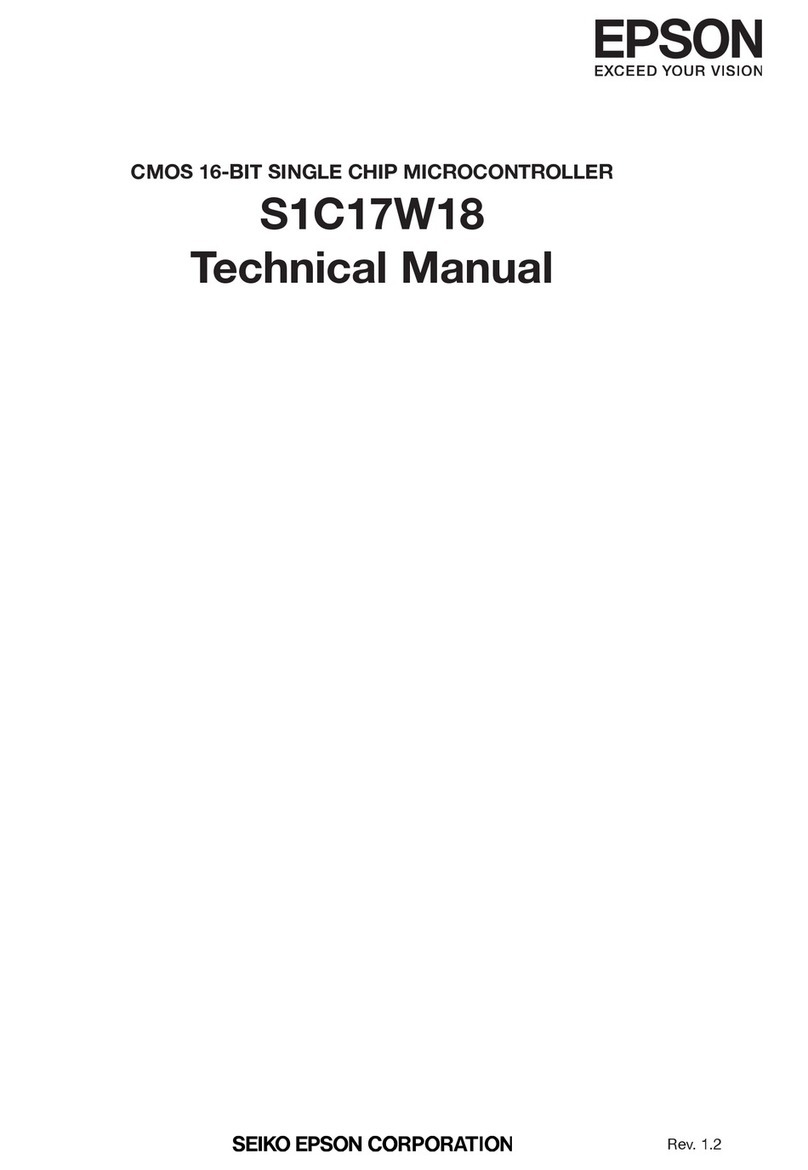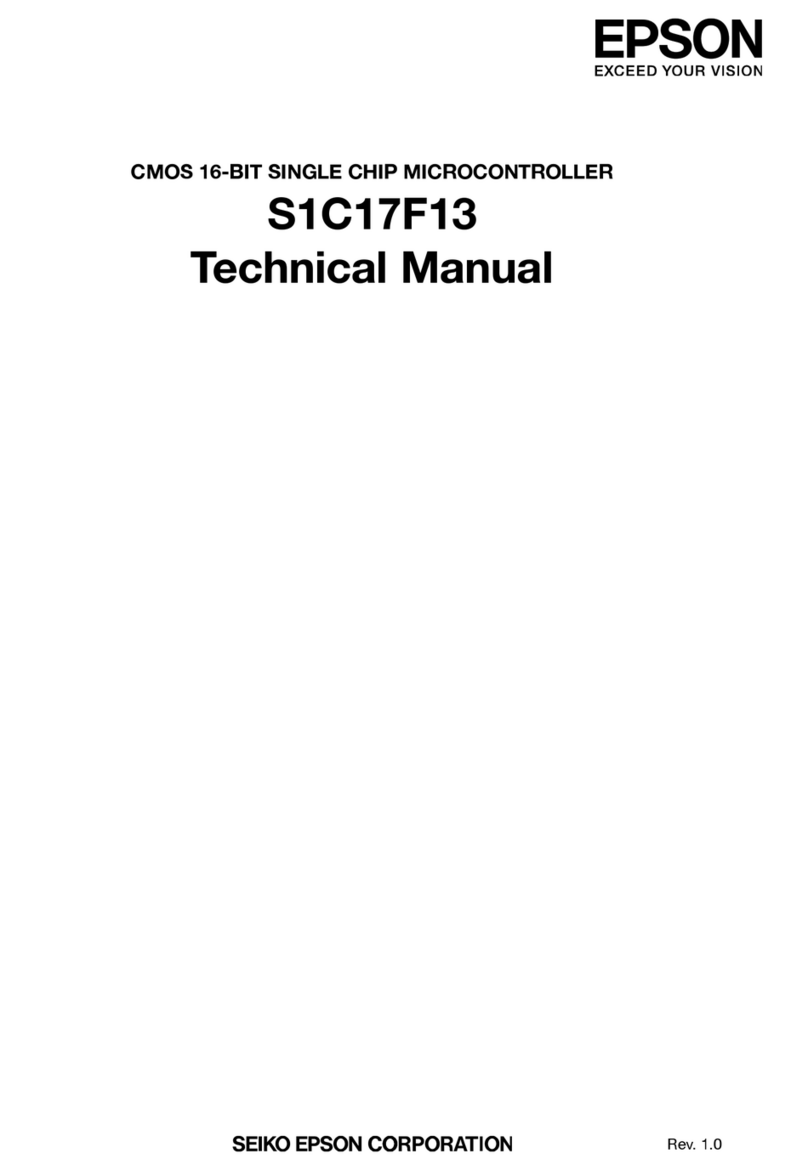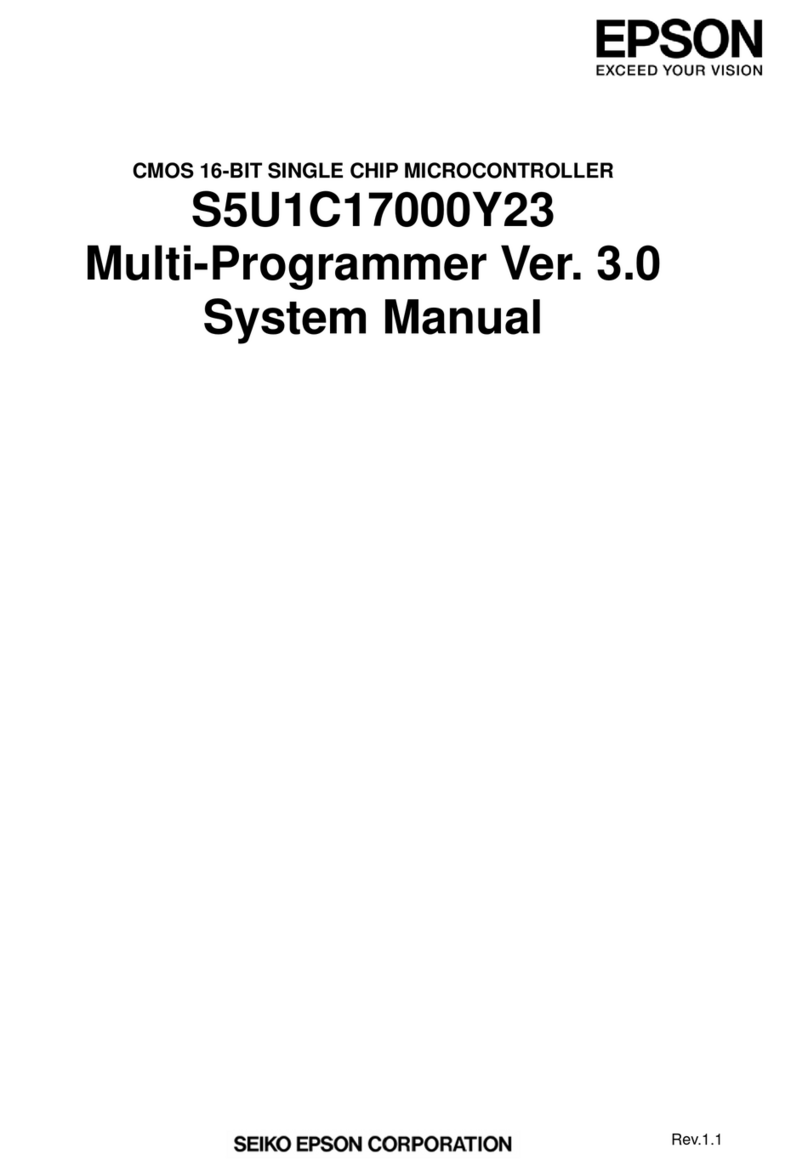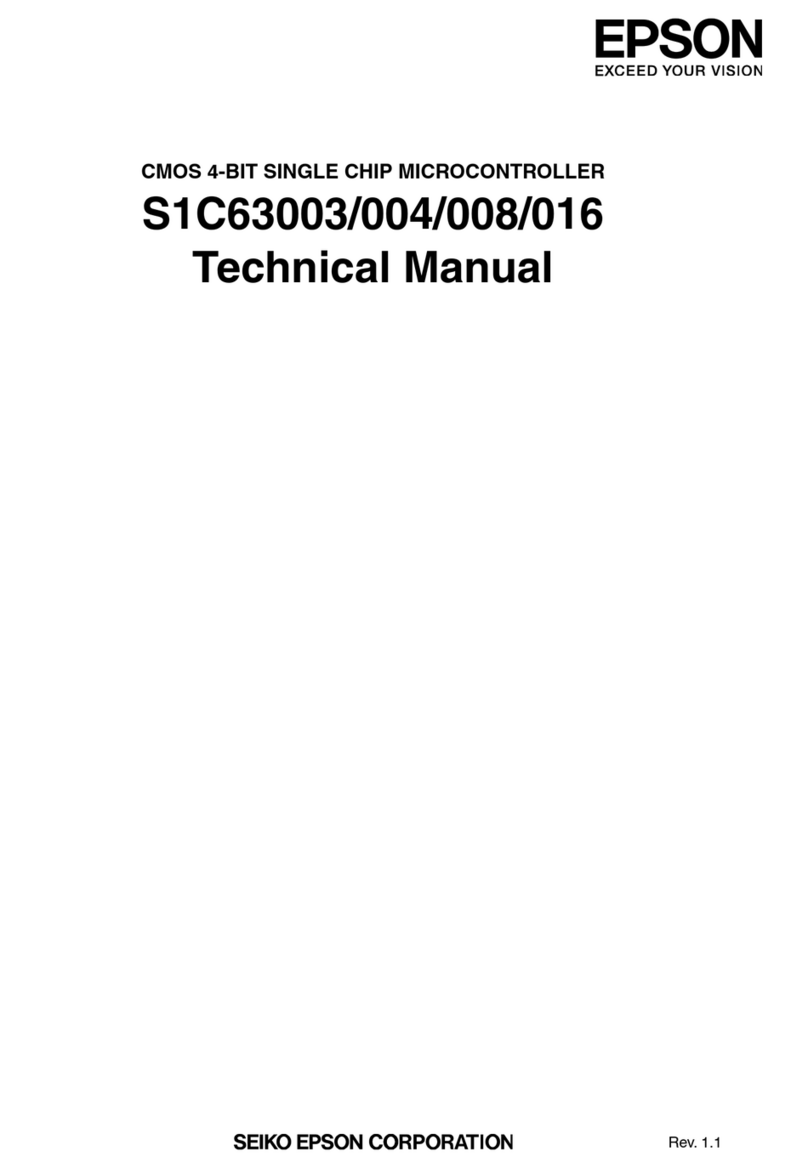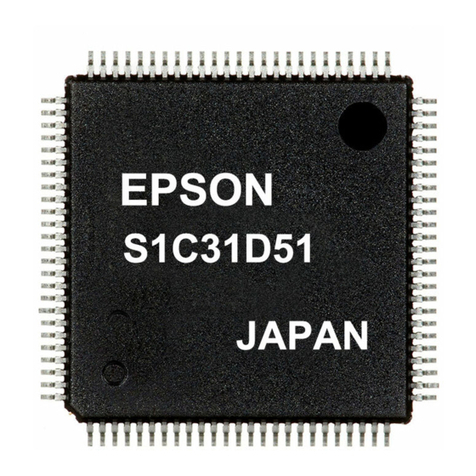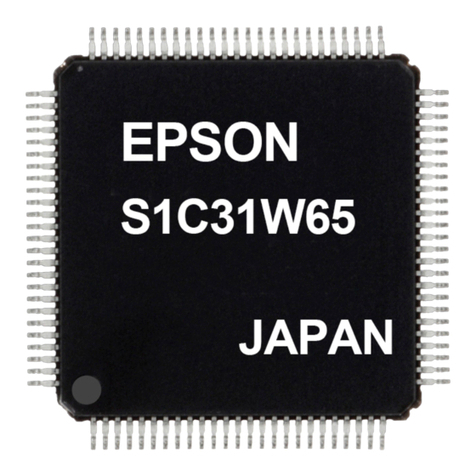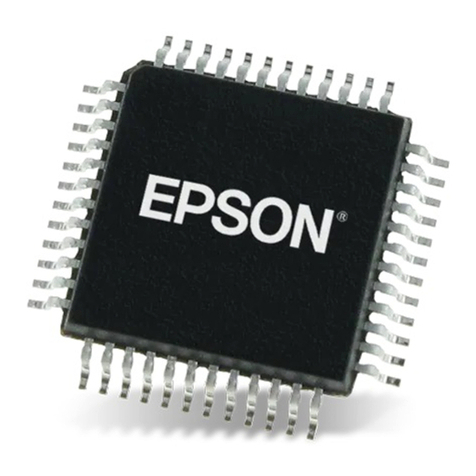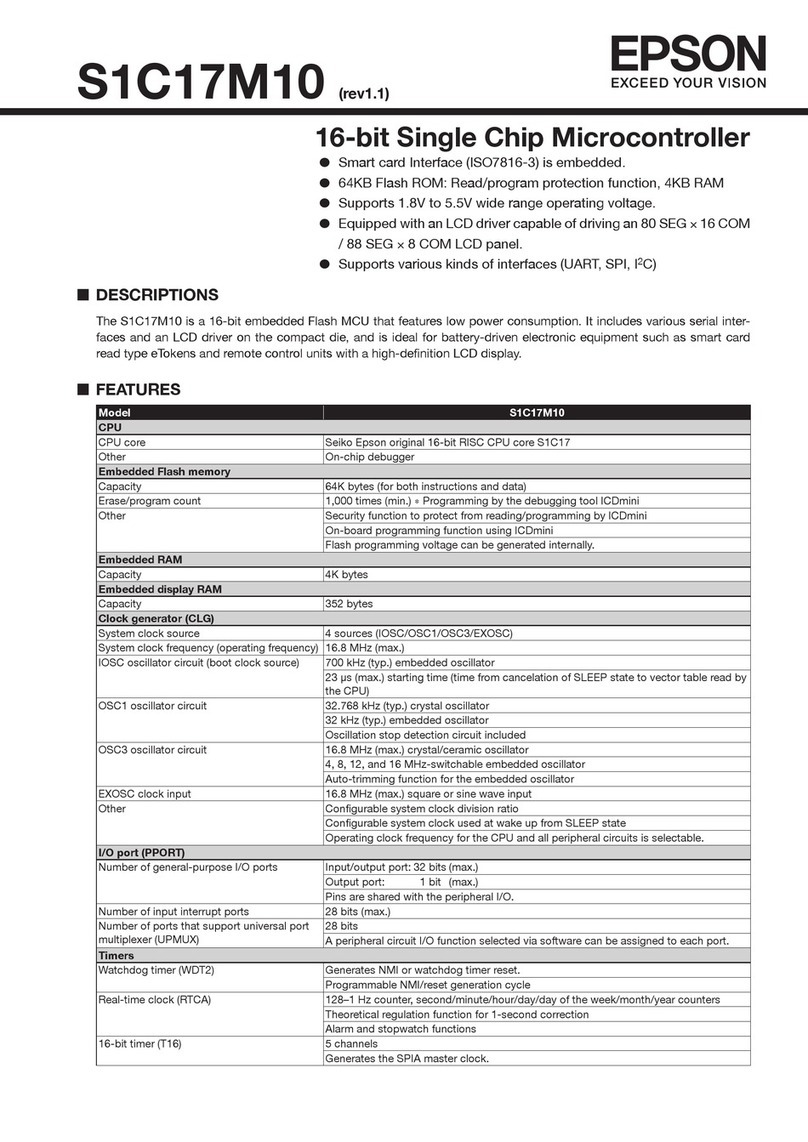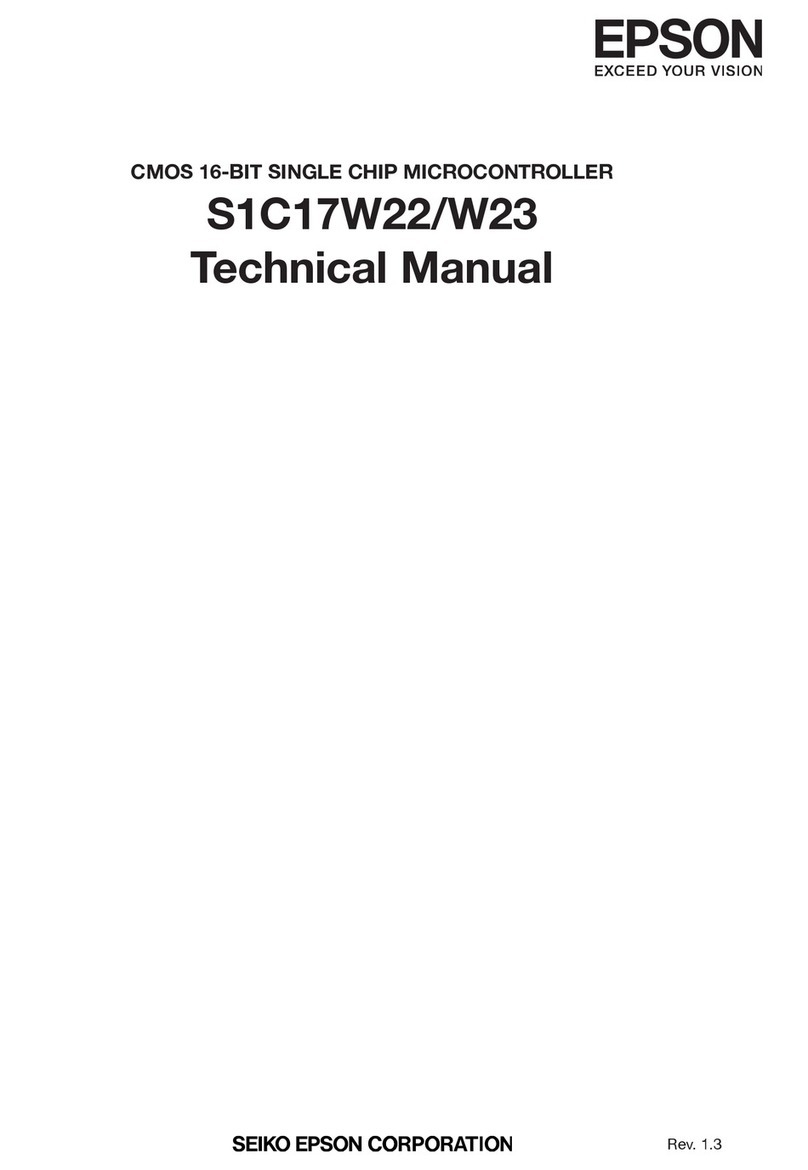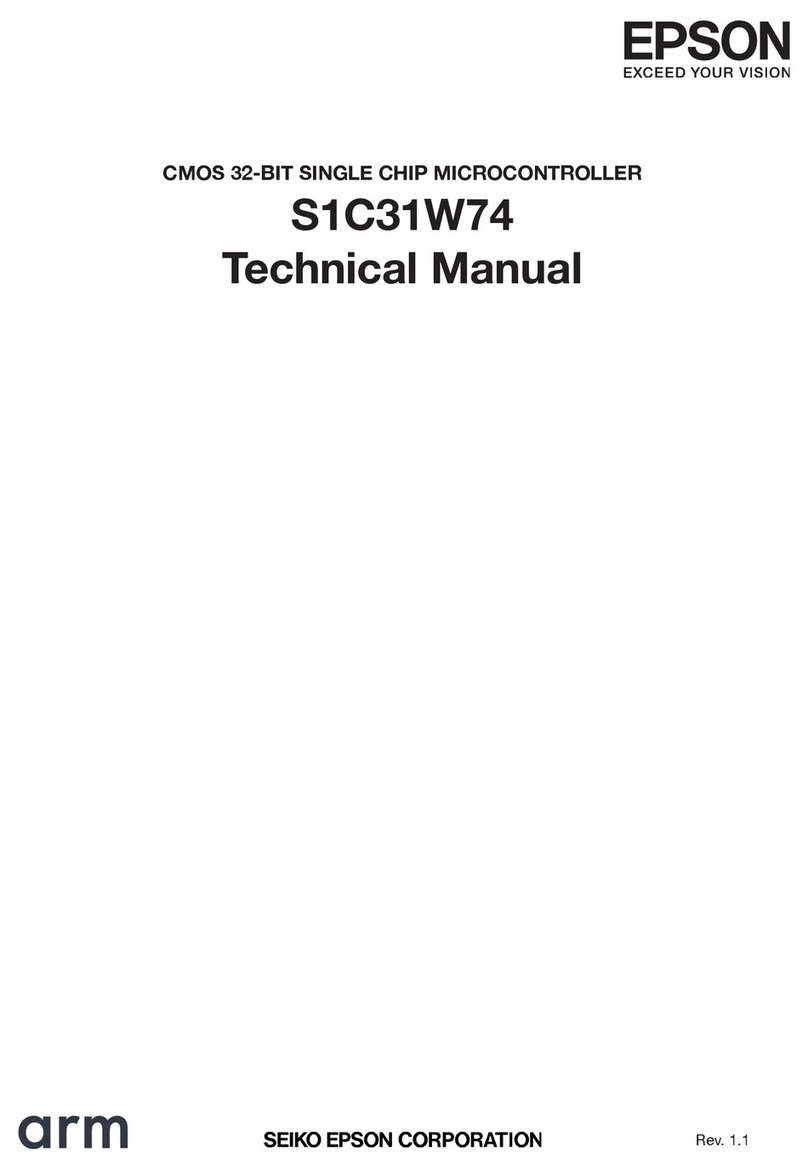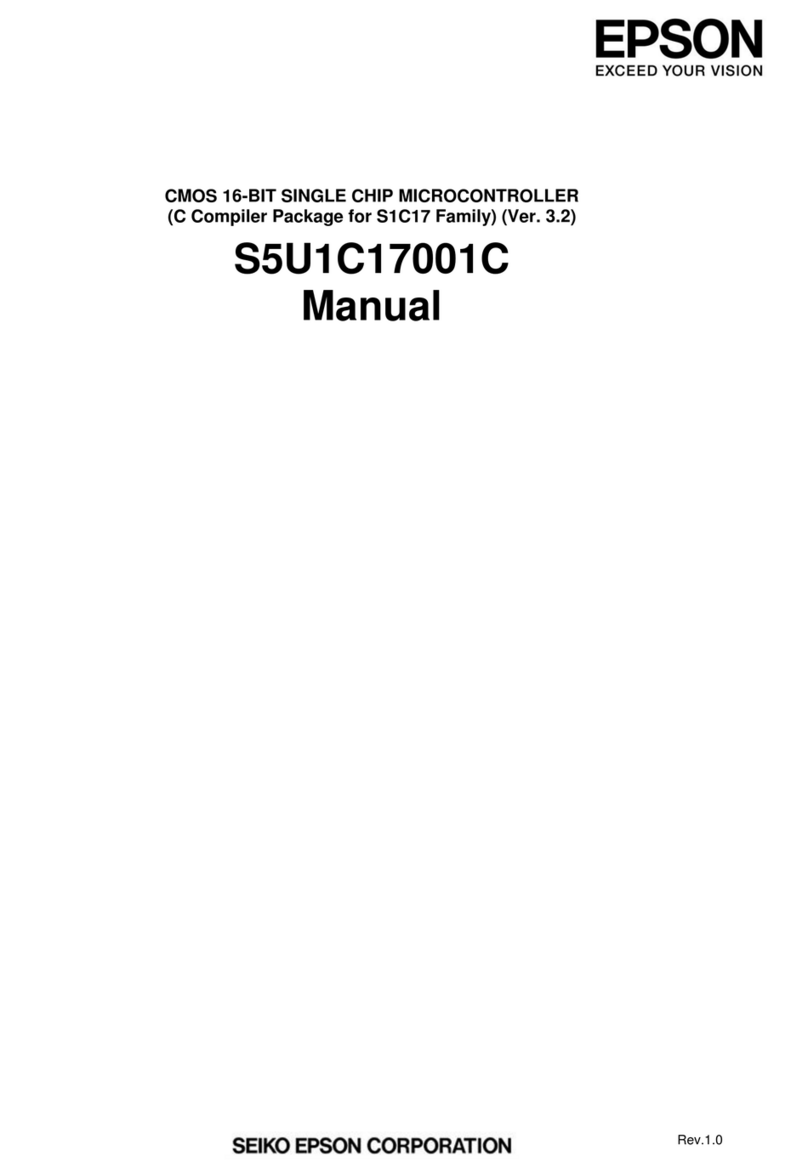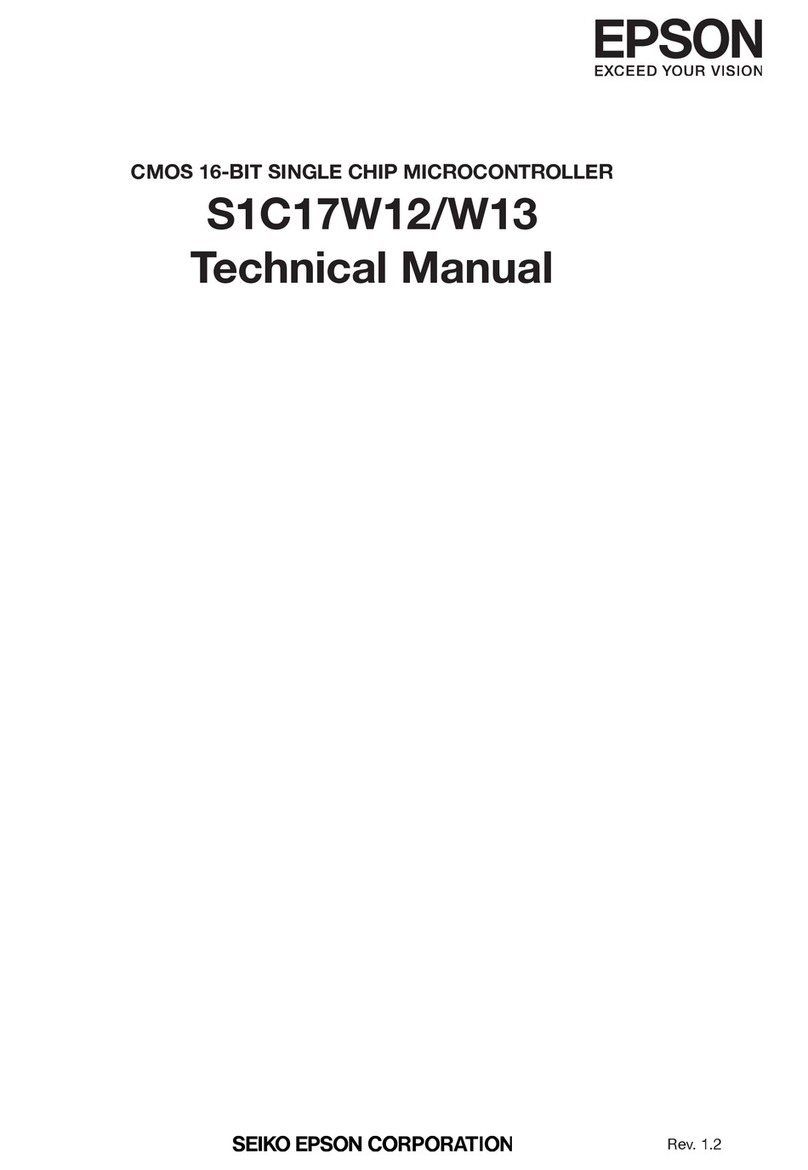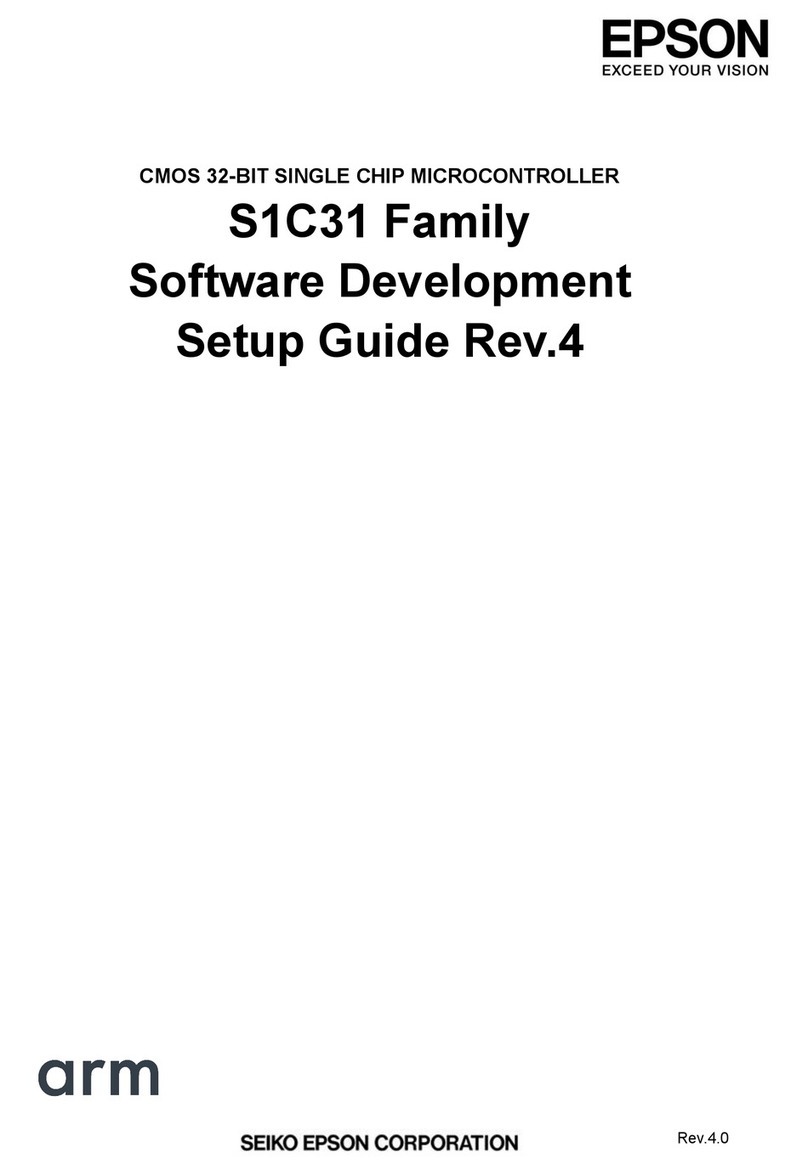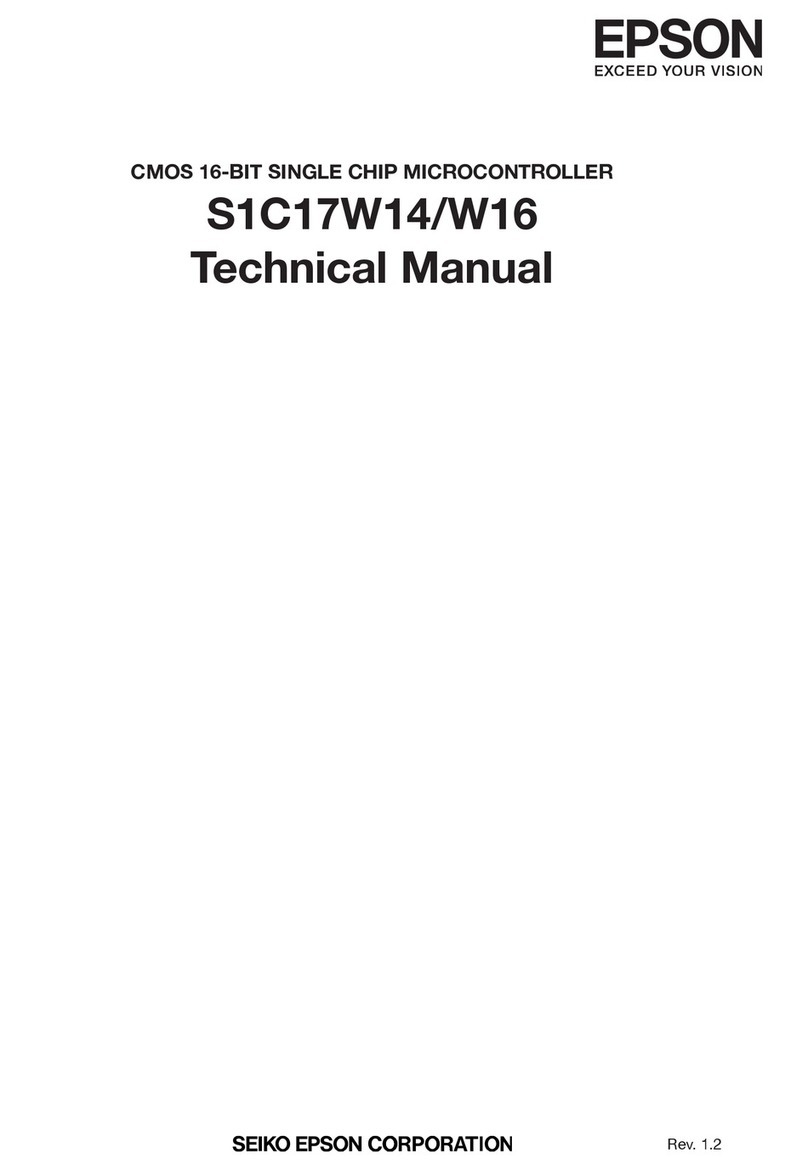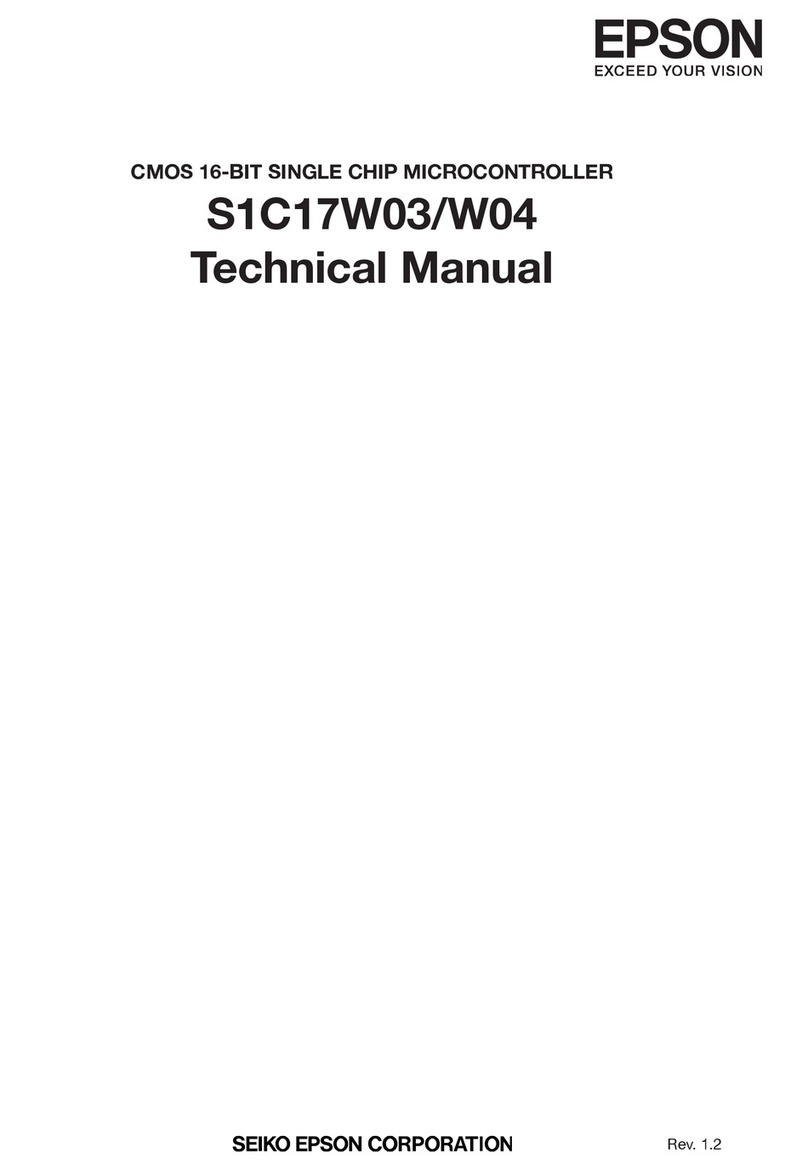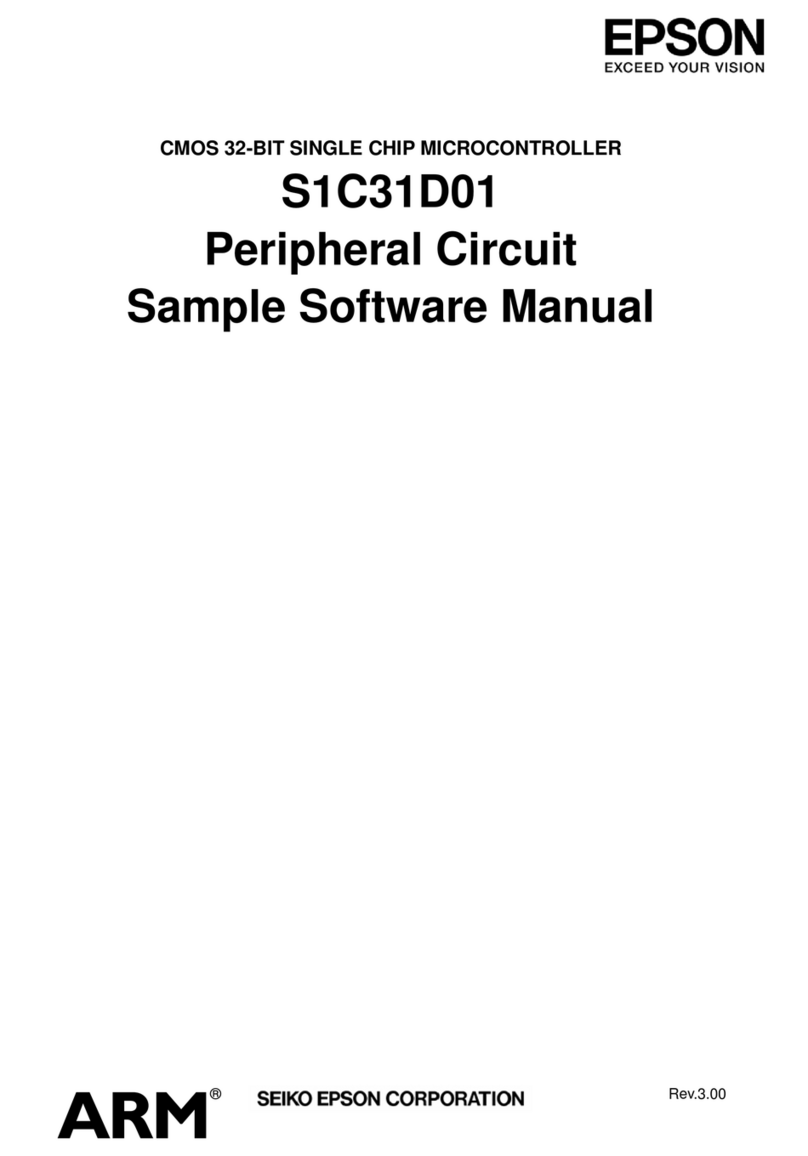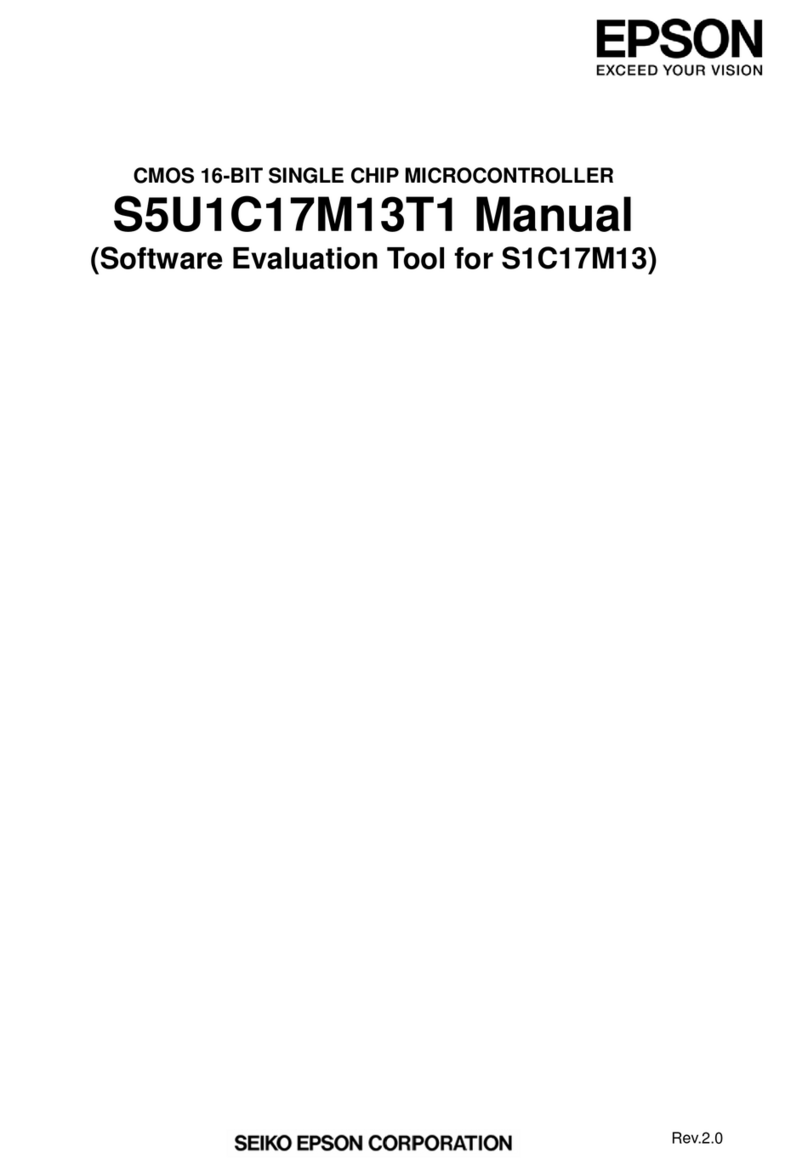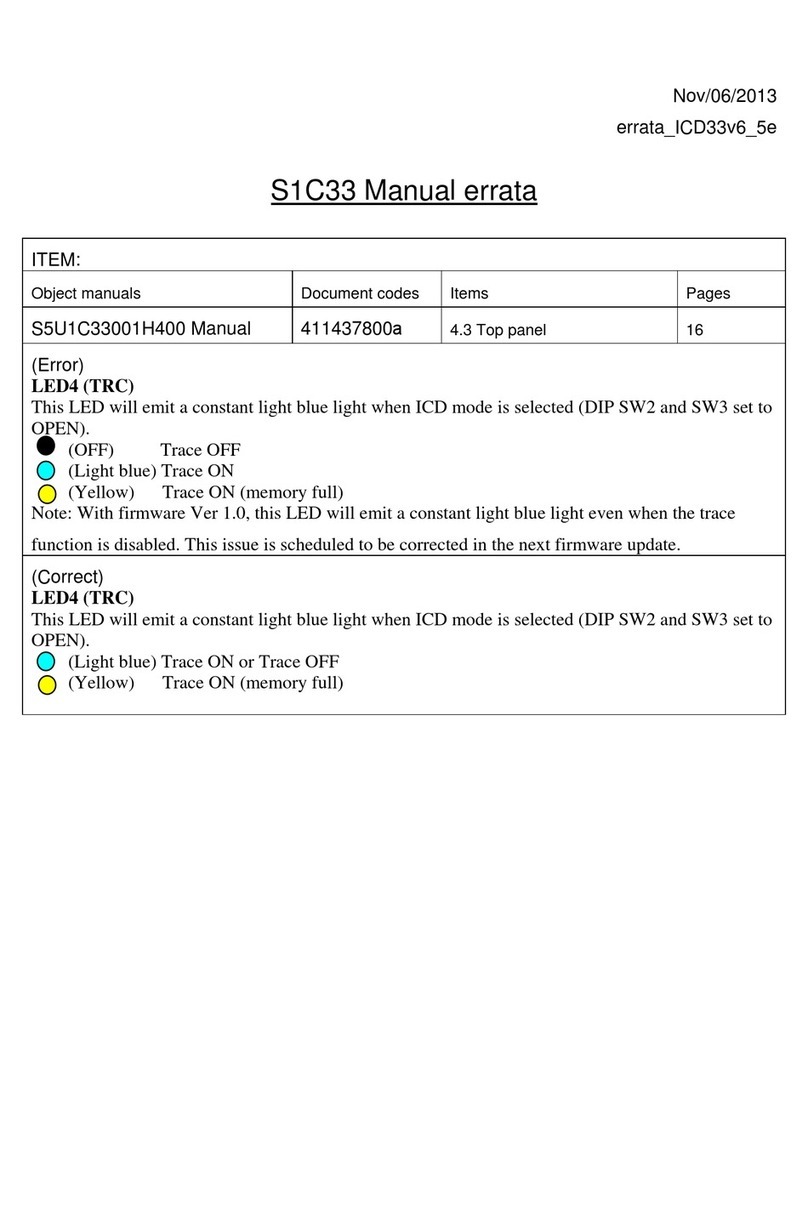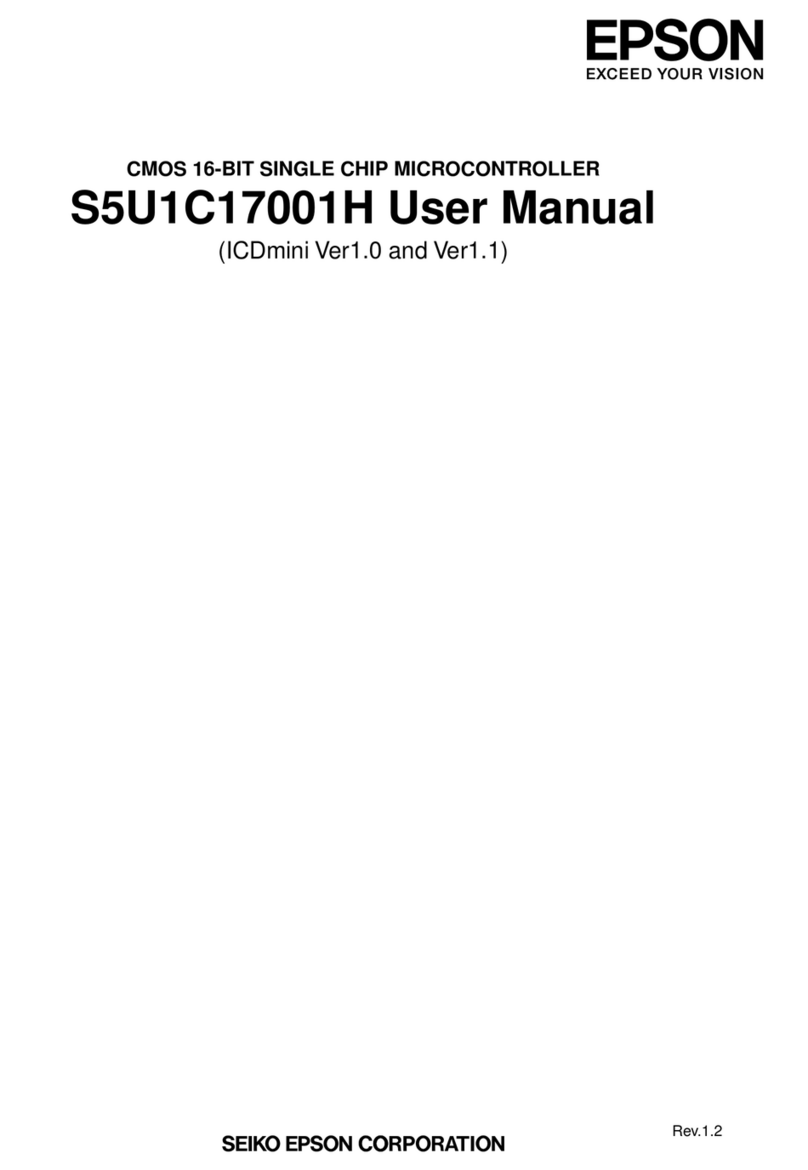
CONTENTS
iv Seiko Epson Corporation S1C17M01 TECHNICAL MANUAL
(Rev. 1.2)
6.6 Control Registers ............................................................................................................ 6-6
PxPort Data Register................................................................................................................ 6-6
PxPort Enable Register ............................................................................................................ 6-7
PxPort Pull-up/down Control Register..................................................................................... 6-7
PxPort Interrupt Flag Register.................................................................................................. 6-7
PxPort Interrupt Control Register............................................................................................. 6-8
PxPort Chattering Filter Enable Register.................................................................................. 6-8
PxPort Mode Select Register ................................................................................................... 6-8
PxPort Function Select Register .............................................................................................. 6-9
P Port Clock Control Register ................................................................................................... 6-9
P Port Interrupt Flag Group Register........................................................................................ 6-10
6.7 Control Register and Port Function Configuration of this IC ......................................... 6-11
6.7.1 P0 Port Group.................................................................................................. 6-11
6.7.2 P1 Port Group.................................................................................................. 6-12
6.7.3 P2 Port Group.................................................................................................. 6-12
6.7.4 P3 Port Group.................................................................................................. 6-13
6.7.5 P4 Port Group.................................................................................................. 6-14
6.7.6 P5 Port Group.................................................................................................. 6-15
6.7.7 Pd Port Group.................................................................................................. 6-16
6.7.8 Common Registers between Port Groups....................................................... 6-16
7 Watchdog Timer (WDT)................................................................................................7-1
7.1 Overview ......................................................................................................................... 7-1
7.2 Clock Settings................................................................................................................. 7-1
7.2.1 WDT Operating Clock....................................................................................... 7-1
7.2.2 Clock Supply in DEBUG Mode......................................................................... 7-2
7.3 Operations ...................................................................................................................... 7-2
7.3.1 WDT Control ..................................................................................................... 7-2
7.3.2 Operations in HALT and SLEEP Modes............................................................ 7-2
7.4 Control Registers ............................................................................................................ 7-3
WDT Clock Control Register ..................................................................................................... 7-3
WDT Control Register ............................................................................................................... 7-3
8 Real-Time Clock (RTCA) ..............................................................................................8-1
8.1 Overview ......................................................................................................................... 8-1
8.2 Output Pin and External Connection .............................................................................. 8-1
8.2.1 Output Pin......................................................................................................... 8-1
8.3 Clock Settings................................................................................................................. 8-2
8.3.1 RTCA Operating Clock ..................................................................................... 8-2
8.3.2 Theoretical Regulation Function....................................................................... 8-2
8.4 Operations ...................................................................................................................... 8-3
8.4.1 RTCA Control ................................................................................................... 8-3
8.4.2 Real-Time Clock Counter Operations............................................................... 8-4
8.4.3 Stopwatch Control............................................................................................ 8-4
8.4.4 Stopwatch Count-up Pattern ........................................................................... 8-4
8.5 Interrupts......................................................................................................................... 8-5
8.6 Control Registers ............................................................................................................ 8-6
RTC Control Register ................................................................................................................ 8-6
RTC Second Alarm Register ..................................................................................................... 8-7
RTC Hour/Minute Alarm Register.............................................................................................. 8-8
RTC Stopwatch Control Register .............................................................................................. 8-8
RTC Second/1Hz Register ........................................................................................................ 8-9
RTC Hour/Minute Register ....................................................................................................... 8-10
RTC Month/Day Register ......................................................................................................... 8-11
RTC Year/Week Register .......................................................................................................... 8-11
